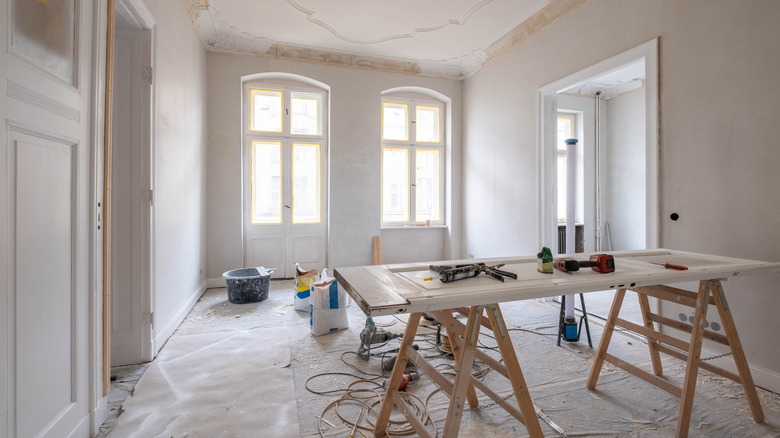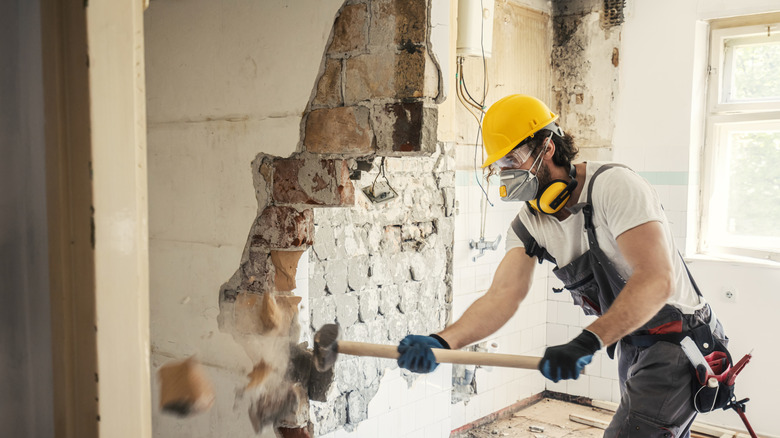The Common Home Reno Project That's Actually Illegal To Do Yourself
Whether you're renovating to create your dream living space or boost your home's resale value, tackling updates yourself can feel rewarding. Plus, it's almost always more budget-friendly, which is why many homeowners turn to DIY options in home renovations. Among the popular projects, lots of homeowners set their sights on knocking down a few walls to give their space a bright, airy feel. If you too are feeling inspired by open-concept designs, you might consider trying your hand in wall removal as well — but if that wall happens to be load-bearing, you could be stepping into dangerous and possibly illegal territory. Some areas even require permits for removing non load-bearing walls.
Here's the thing: Not all home updates are created equal. Cosmetic changes like painting, installing new fixtures, or swapping out cabinets are usually safe to take on without professional help. But there are things you should know before you knock down a wall. Structural changes, like removing a load-bearing wall, affect the very integrity of your home. These projects go far beyond surface-level improvements and require careful planning, engineering knowledge, and legal clearance to do safely and properly.
Why you shouldn't knock down walls yourself
Removing a load-bearing wall isn't just an aesthetic decision; it's an engineering one. These walls support the weight of everything above them, from upper floors to the roof. Taking one out without a plan could lead to sagging ceilings or even structural collapse. Because of this, most municipalities require building permits for this type of work. If you don't get the necessary paperwork before you knock down a wall, you could face consequences ranging from paying hefty fines to losing your homeowner's insurance, not to mention the potential structural damage to your home. Once you determine if a wall is load-bearing and get the necessary permits to take it down, you should hire removal specialists to get the job done. Relying on their expertise, they can make sure your floor plan is in order, weight is evenly distributed, and the new construction is safe and sound.
If you're set on opening up your living space but want to avoid the legal and safety headaches, consider non-structural design changes that create a similar effect. For example, rearranging furniture, using area rugs to define zones, or adding large mirrors can make a room feel more spacious and connected without altering the building itself. This approach helps maintain structural integrity while visually opening up the space, and it's a great way to introduce some spaciousness without making costly mistakes.

